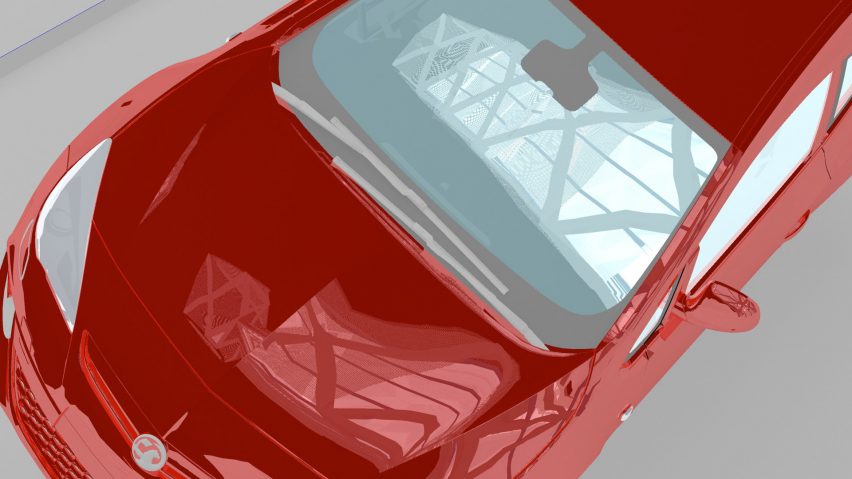Central Saint Martins graduate James Parkes has proposed creating a tower in Brixton where disadvantaged women who are "burdened by the effects of capitalism" can create art after being released from prison.
Called Vertical Loom: Re-appropriating Capitalism, the project envisions a high-rise with numerous workshops and exhibition spaces where former inmates can engage in art therapy.
Parkes designed the tower after discovering that since 1995 two and a half times more women were incarcerated in prison. He also found that half of these women had mental health issues and a large number had attempted suicide.
"Instating forms of rehabilitation through methods of teaching, learning and art practice allows for women disadvantaged by the system post-prison can transition easier into the modern world, with valuable skills, education and aspiration," said Parkes.
"Conceptually, the project focuses on the idea of re-appropriation and subjects the skyscraper as a typology, to its early 1900s symbolism of representing hope and change," he told Dezeen.
He envisions the building being run in collaboration with Women in Prison, a Brixton based charity that offers support for women affected by the criminal justice system.
It would house spaces for the production of banners, tapestries and prints that could be used in protest. These would be displayed both in spaces within the building and on its facade as public pieces of art that signify the building's political agenda.
"The building itself is designed to be a space for exhibition both through conventional interior displays and also the publicly viewable exterior," Parkes explained.
Within the building, there would be a combination of public and private spaces. Open-plan workshops, studios, office and educational spaces would be separated by public terraces, an arrangement that Parkes describes as "layers of public and private space".
These layers would be connected by a winding ramp that runs throughout the building's public spaces and acts as an informal gallery space for the public.
The site's location close to Windrush Square and opposite the black cultural archives, played a significant part in defining the function of Parkes' design.
"The tower itself would act as a monument, landmark and political piece on Brixton's landscape," he said.
He chose to place the rehabilitation centre in a tower that visually resembles the Foster+Partners-designed Hearst Tower in New York, as a criticism of capitalism.
"By using symbols of capitalism as main components of the buildings form, the design amassed an external steel structural system, echoing that of the Hearst Tower," he explained, "adopting the visual identity of corporate skyscrapers as a means of critique."
Parkes carried out the project as part of Studio 7 on the Architecture course at Central Saint Martins (CSM), which is run by Dejan Mrdja and Ursula Dimitriou.
The brief, titled New Ways Of Being: Designing Politics, sought to explore the relationship between design and alternative political futures and asked students to interrogate existing, market-prescribed spatial typologies and imagine new ways of housing socially empowering art practices.
Other graduate projects featured recently on Dezeen include fellow CSM alumni Beatrice Sangster-Bullers' AI-enabled clothing and Fredrik Tjærandsen's inflatable fashion.

